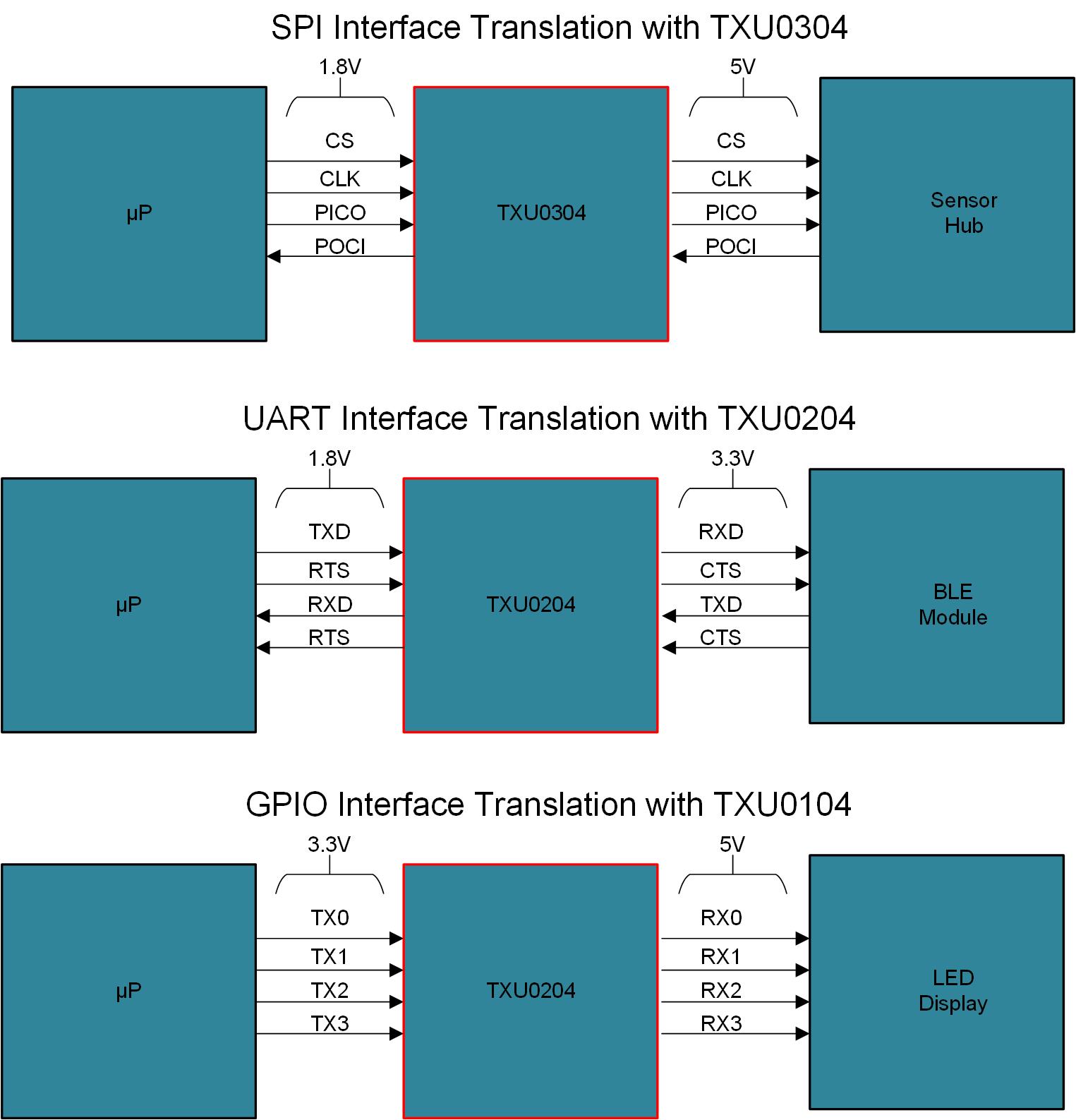SCEA107 April 2021 TXU0104 , TXU0204 , TXU0304
1 Application Brief
As 5G infrastructure is brought online worldwide, the benefits of 5G beyond just higher bandwidth will start to play a bigger role in commerce and industries. For example, network slicing (that is enabled by the 5G standard) will lower market entry barriers for many new types of businesses and business models that leverage IoT technologies. Network slicing enables service providers to create virtual networks within the physical 5G network, allowing for the creation of lower cost dedicated IoT networks. Among the IoT technologies, the implementation of Narrow-Band Internet of Things (NB-IoT) is expected to flourish with the roll out of 5G networks and associated network slicing service offerings. NB-IOT implementations are primarily meant for indoor applications and machine to machine communication, such as battery powered sensor networks that are connected to a base station. One key enabling characteristic of NB-IoT implementations is long battery life that is expected from the nodes of an NB-IoT network.
Enabling long battery life for NB-IoT module
applications presents design challenges to system designers. Component selection for
NB-IoT designs is one of those key challenges for system designers as they try to
balance battery life with optimal performance and implementation cost. One of the
main challenges of component selection is selecting devices that will interoperate
with one another while still being very power efficient. Often, the selected device
for one function will operate on a different voltage rail than the optimal component
for another function. Additionally, low power modes for many circuit components will
drive I/O voltage levels below common rails such as 1.8 V, which can present a
challenge to designers. Battery saving deep sleep modes are very effective for low
duty cycle applications where a majority of the time the system is in sleep mode.
This is especially true for the heuristic based deep sleep modes that many NB-IoT
nodes take advantage of to extend battery life which require module components to
interoperate at low IO voltage levels to minimize battery usage. How can a design
engineer bring together the core components of NB-IoT designs and still take
advantage of their low power capabilities? The simple answer is to use low power and
efficient fixed direction level shifter devices that, not only supports low power
operation, but also supports shifting I/O levels down to 1.1 V
(1.1 V to 5.5 V).
Low voltage fixed direction level translators enable design engineers to implement low power level shifting between core components for control and data interfaces such as SPI, UART, GPIO, and virtually any other multi-bit interface, and the low voltage I/O levels associated with low power modes of the signal chain devices. See Figure 1-1 for common control interface level translation implementation examples. The ability to support voltage levels below common voltage rails such as 1.8 V enables NB-IoT applications to enter deep sleep battery saving modes that can limit I/O levels to sub 1.8 V. Fixed or unidirectional level shifting implementations also simplify designs by eliminating some of the implementation complexities of auto-directional devices that employ one-shot based architectures where design issues such as bus contention can arise. Fixed direction devices like TI’s TXU series are available in multiple channel direction configurations such as three transmit and one receive (TXU0304) that are commonly needed for standards such as SPI or two channels in each direction (TXU0204) for level shifting interfaces such as UARTs and a configuration with all channels in the same direction (TXU0104). In addition, the lower pin count nature of fixed direction devices makes them suitable for very small μQFN packages that are conducive to board space limited designs common for NB-IoT nodes. Easy to implement fixed direction level shifter solutions can help designers bring their NB-IoT module designs together in the most power efficient manner possible. For more information on the TXU0x04 level translation family, please visit the Texas Instruments' voltage translation landing page at www.ti.com/translation.
 Figure 1-1 TXU0x04 Use Case Examples
Figure 1-1 TXU0x04 Use Case Examples